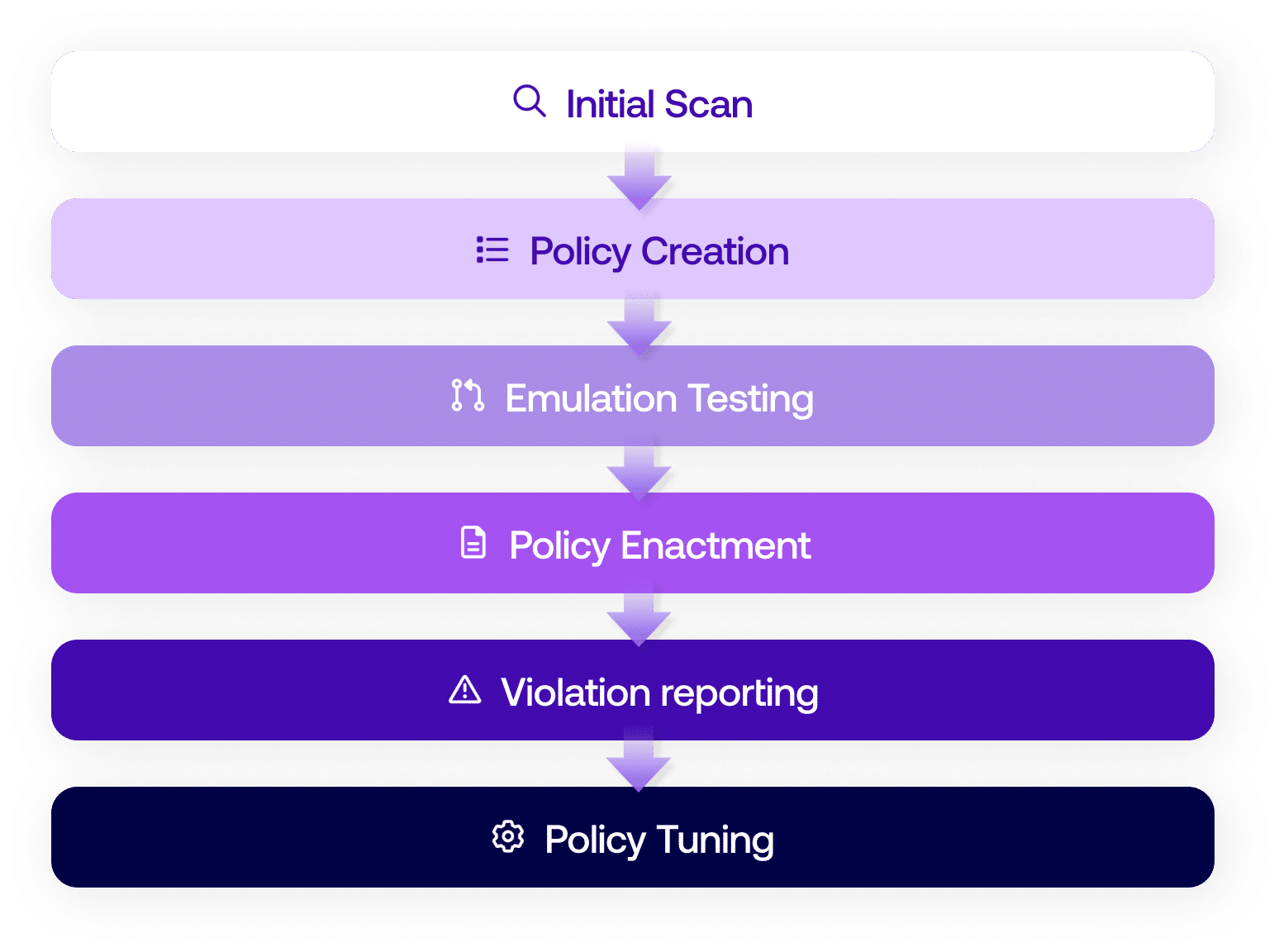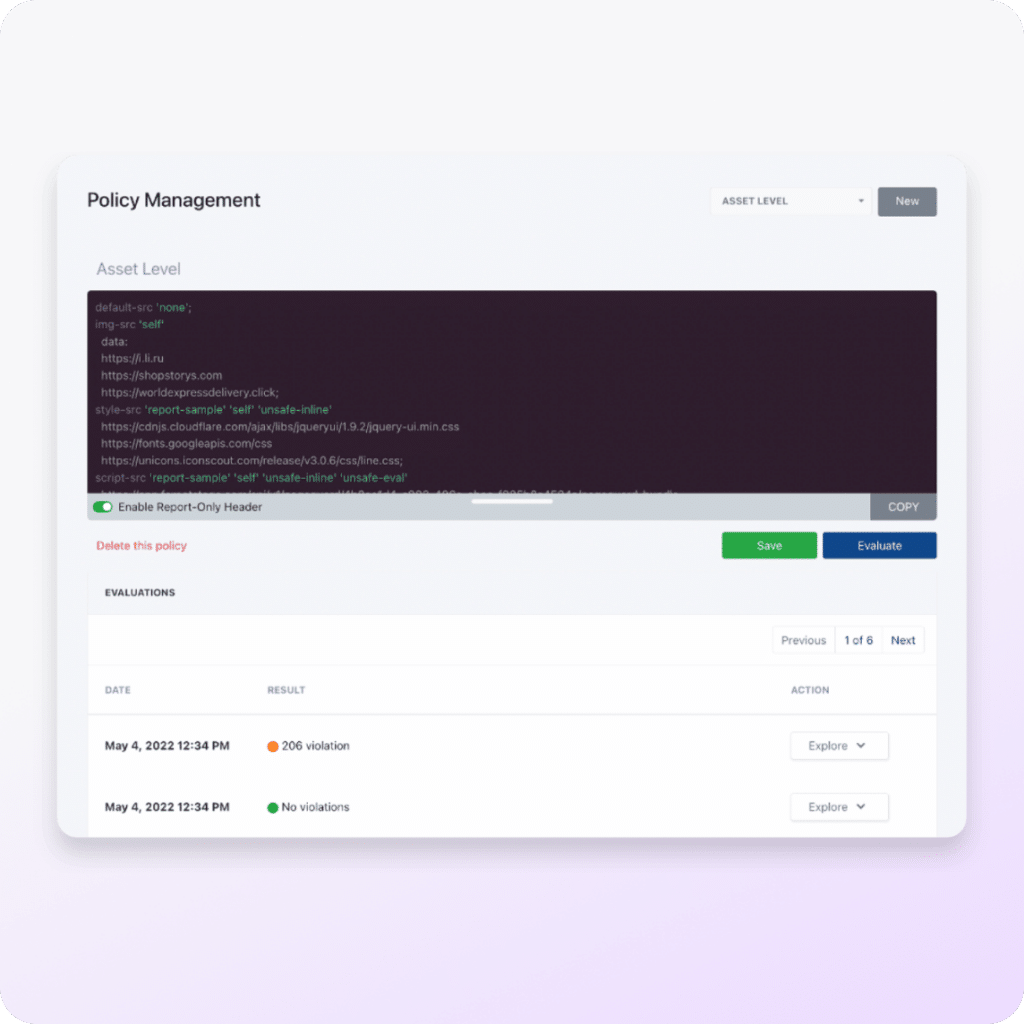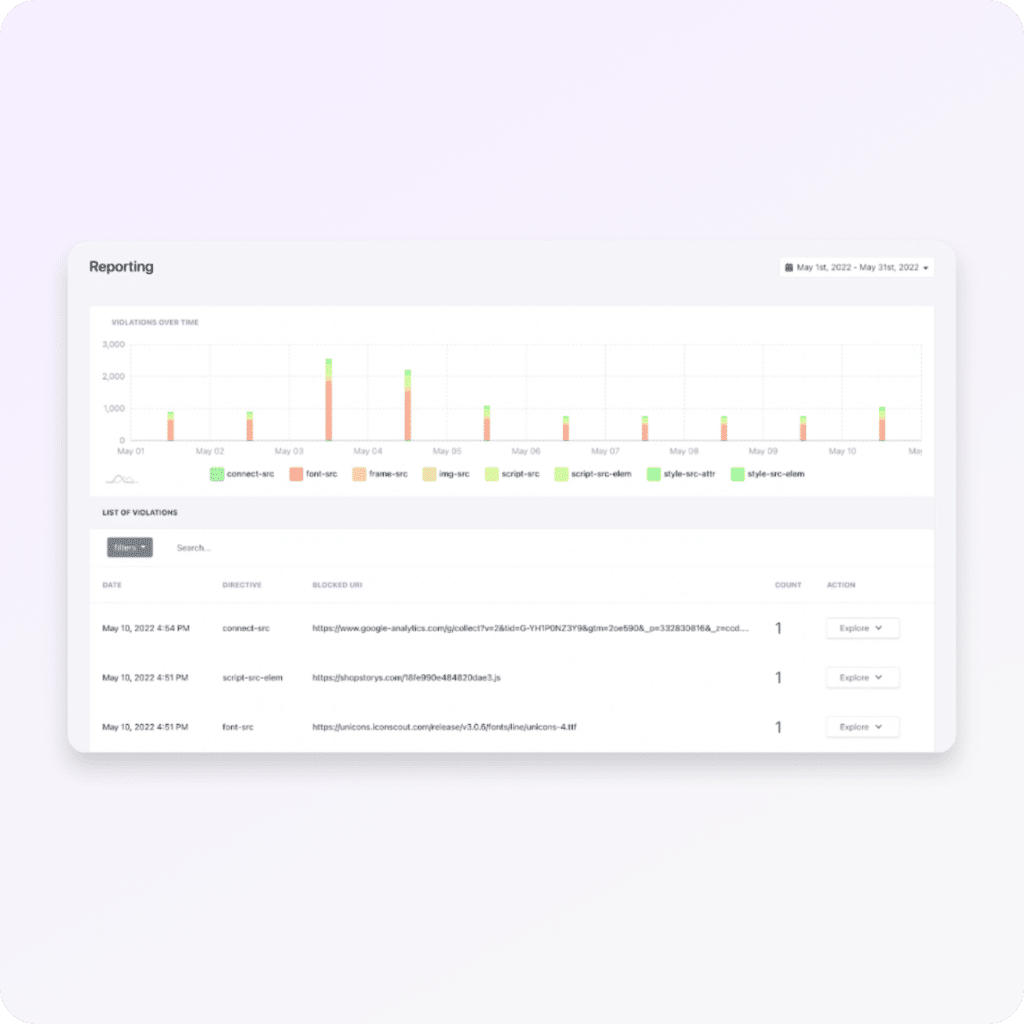How DomainGuard Works
To date, security analysis and web application developers have had to manually manage Content Security
Policies (CSP) on their web applications and websites. Manual CSP efforts can be extremely arduous, to
the extent that many organizations just set their policies and forget about them, often ignoring or not
knowing which violations to address. This leaves doors wide open for exploitation on the part of cyber
adversaries. Feroot Security developed DomainGuard to ease the manual burden of Content Security
Policy deployment, testing, and management, while making violation reporting and policy tuning a breeze.
How DomainGuard Works





